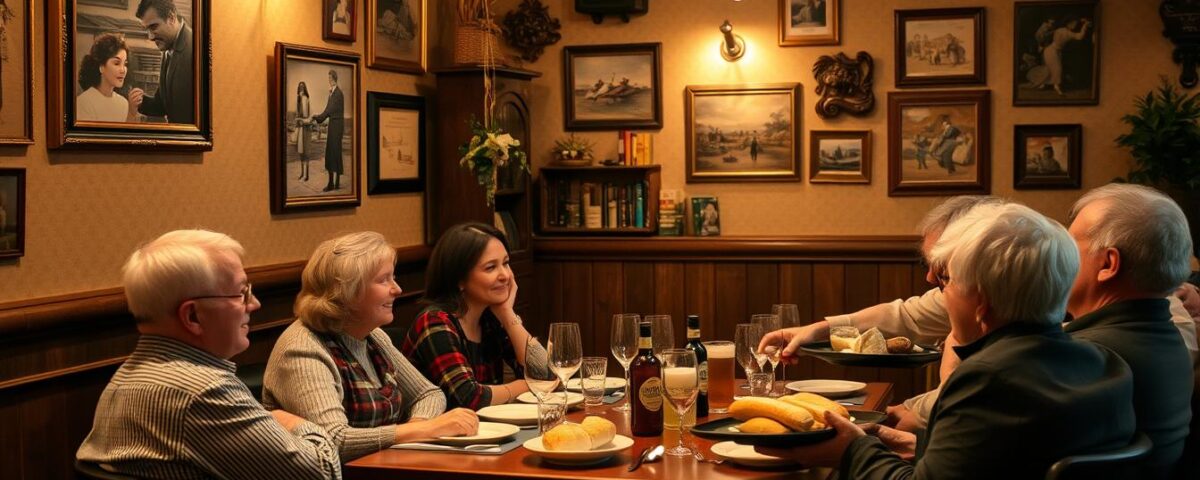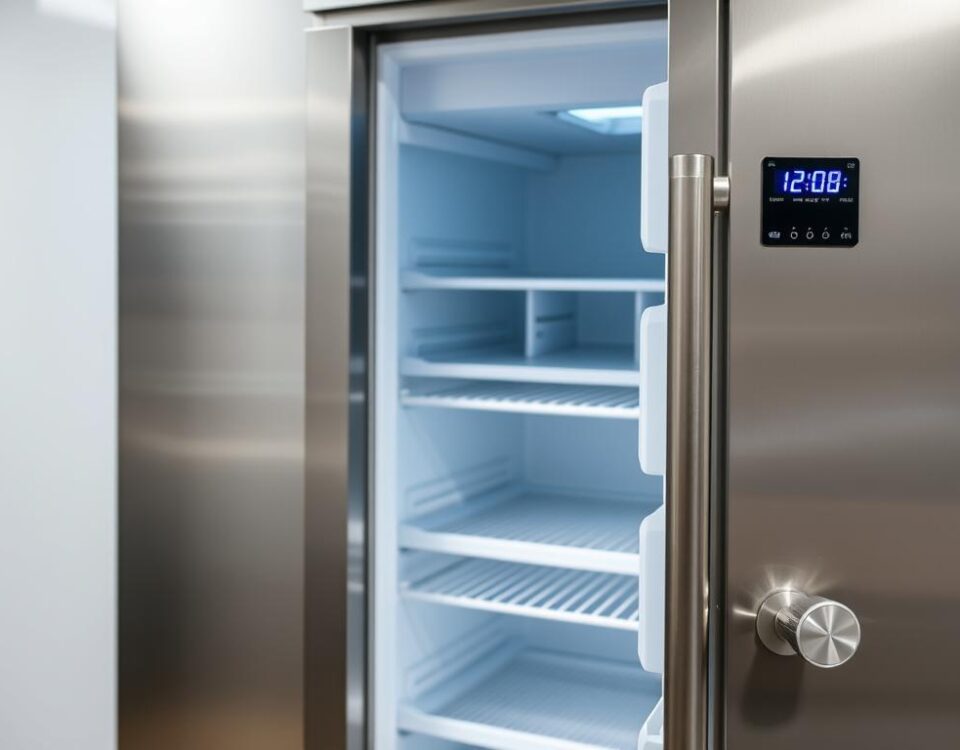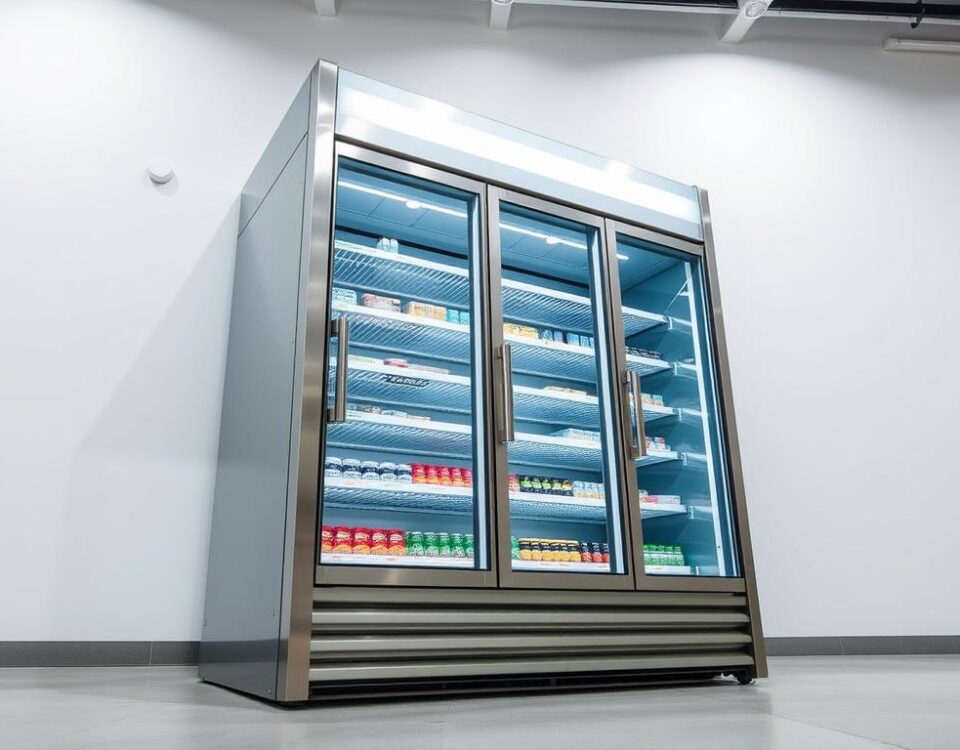
Why Some Restaurants Are Always Full and How to Replicate Their Success
July 6, 2025
How to Rank Your Restaurant #1 on Google: The Complete Guide
July 7, 2025I still remember the first time I walked into my favorite local eatery. The aroma of freshly baked bread and the warm smile from the staff made me feel like I was coming home. It was more than just a meal; it was an experience that left a lasting impression. In today’s competitive restaurant business, creating such experiences is crucial for survival.
Did you know that regular diners spend about 67% more than new ones? Moreover, increasing customer retention rates by just 5% can boost profits anywhere from 25% to 95%. These statistics highlight the importance of transforming first-time visitors into loyal regulars.
So, how can you leverage psychology to make your restaurant a favorite among locals and visitors alike? The answer lies in understanding the psychology behind customer loyalty and creating memorable experiences that keep guests coming back.
Key Takeaways
- Proven strategies for transforming one-time diners into devoted regulars using psychological principles.
- The importance of focusing on customer retention over acquiring new guests.
- Understanding the psychology behind restaurant loyalty to create memorable experiences.
- Small, strategic changes that can increase customer retention rates and boost profits.
- A comprehensive roadmap for building a loyal customer base.
The Value of Customer Retention in the Restaurant Industry
For restaurants, the key to long-term success lies in turning first-time guests into loyal customers. In an industry where margins are always under pressure, customer retention represents one of the most accessible paths to sustainable profitability.
Why Regulars Are Worth More Than New Guests
Industry data consistently shows that regular guests spend about 67% more than new ones. This significant difference highlights the value of retaining customers. Regulars not only spend more but also tend to visit more frequently, contributing to a stable cash flow that is crucial for business growth.
The Financial Impact of Increasing Customer Retention
Increasing customer retention rates by just 5% can boost profits anywhere from 25% to 95%. This striking financial data underscores the importance of loyalty in the restaurant industry. By focusing on retaining existing customers, restaurants can significantly enhance their profitability without the high costs associated with acquiring new guests.
Retaining customers is more cost-effective than acquiring new ones. By leveraging customer loyalty, restaurants can create a compounding effect on their business growth through higher average checks and visit frequency. Loyal guests contribute to more stable cash flow, allowing for better business planning and investment in quality.
Understanding the Psychology of Restaurant Loyalty
The key to fostering loyalty lies in understanding the emotional connection diners make with a restaurant. According to Restaurant Business Online, diners who feel a personal connection to a restaurant tend to visit more frequently and spend more per visit. This emotional bond is crucial for driving repeat business.
What Makes Diners Feel Connected to a Restaurant
Diners feel connected to a restaurant when they experience a sense of recognition and comfort. This connection can be fostered through consistent, positive experiences that make guests feel valued. By creating an atmosphere where guests feel at home, restaurants can encourage loyalty.
The Emotional Triggers That Drive Repeat Visits
Several emotional triggers compel diners to return to a restaurant, including recognition, comfort, and anticipation. By understanding these triggers, restaurants can create experiences that drive repeat visits. For instance, celebrating special occasions or creating positive visit routines can significantly enhance customer loyalty.
Identifying Your First-Time Visitors
Identifying first-time visitors allows restaurants to tailor their service and create a memorable experience. This process involves a combination of technology and staff training to ensure that new guests feel welcomed and valued.
Technology-Based Identification Methods
Modern restaurant management systems can help identify new guests through data analysis. By leveraging reservation systems, loyalty programs, and credit card information, restaurants can pre-identify new visitors before they arrive. This allows staff to prepare and offer a personalized welcome.
Training Staff to Recognize New Guests
While technology provides a foundation, it’s equally important to train staff to recognize and respond to new guests. This involves teaching front-of-house teams to subtly determine if a guest is new and to provide appropriate welcome experiences, such as a tableside visit from a manager or a complimentary appetizer.
| Identification Method | Description | Benefits |
|---|---|---|
| Reservation System | Analyzing reservation data to identify new names | Pre-emptive preparation for new guests |
| Loyalty Program | Checking loyalty program data for new participants | Personalized welcome based on loyalty status |
| Staff Observation | Training staff to observe and identify new guests | Enhanced service quality and personalized experience |
By combining technology-based identification methods with well-trained staff, restaurants can create a seamless and welcoming experience for new guests, setting the stage for building loyalty.
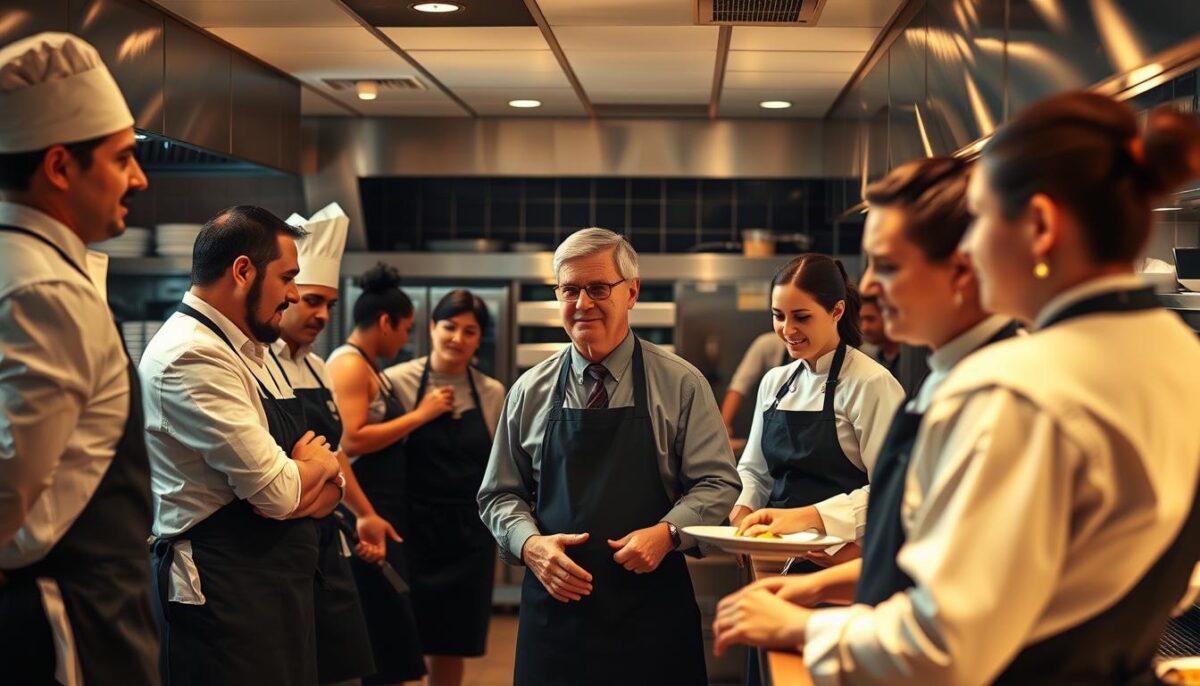
Creating a Memorable First Impression
First impressions matter, and in the context of a restaurant, they can be the difference between a one-time visit and a loyal customer. As I always say, “The first visit to a restaurant sets the tone for the guest’s overall experience and their likelihood of returning.” To achieve this, several key factors come into play.
To create a memorable first impression, it’s essential to focus on service excellence, environmental factors, and special touches that make first-time visitors feel valued.
Service Excellence Strategies
Training your staff to provide exceptional service is critical. This includes ensuring that they are attentive, knowledgeable about the menu, and responsive to guests’ needs. Excellent service sets the foundation for a positive experience.
Environmental Factors That Impact Guest Experience
The ambiance and cleanliness of your restaurant significantly influence how guests perceive their visit. Ensuring that the dining area is clean, well-lit, and aesthetically pleasing can enhance the overall experience. A welcoming atmosphere makes guests feel at ease.
Special Touches for First-Time Visitors
Beyond the fundamentals, consider implementing new guest enhancements such as a welcome card at the table, a visit from the chef for special occasions, or a small complimentary taste of a signature dish. These gestures signal that you value their business and want to build a relationship. As the saying goes, “It’s the little things that count,” and in the restaurant industry, these small touches can make a significant difference in creating a loyal customer base.
- Implementing welcome gestures that are both personal and relevant to the guest’s occasion or preferences.
- Training staff to recognize and respond to the needs of first-time visitors.
- Creating a cost-effective welcome enhancement strategy that can be scaled across different restaurant concepts.
By focusing on these areas, you can create a memorable first impression that not only delights your first-time visitors but also encourages them to return and become loyal customers.
Strategic Follow-Up: The Key to Turn Restaurant Guests into Loyal Customers

Effective follow-up is essential for turning first-time restaurant visitors into loyal customers. This process involves a combination of timely communication, personalized messages, and strategic incentives that encourage repeat visits.
Timing Your Post-Visit Communication
The timing of your post-visit communication is crucial. Reaching out too soon can be seen as overly aggressive, while waiting too long may cause your restaurant to be forgotten. I recommend sending a follow-up message within 24 to 48 hours after their visit.
Crafting Effective Welcome Messages
A well-crafted welcome message can make a significant difference. It should be personalized, thanking the guest for their visit and inviting them to return. Using the guest’s name and referencing their visit details can enhance the personal touch.
Incentives That Drive Return Visits
Incentives are a powerful tool for driving return visits. For instance, offering a 10% discount on their next visit within two weeks can create a sense of urgency. Other effective incentives include invitations to special events or complimentary menu items. The key is to create a sense of time sensitivity without being overly promotional.
By implementing these strategies, restaurants can effectively turn first-time guests into loyal customers, increasing repeat business and fostering a loyal community around their brand.
Building Momentum Through Critical Early Visits
Turning first-time guests into loyal customers requires a strategic approach, particularly during their initial visits. The experiences provided during these early visits lay the foundation for a customer’s loyalty.
Research indicates that the first few visits are critical in determining whether a guest will return. It’s during this period that progressive personalization can significantly influence a customer’s decision to become a regular.
The 3-5 Visit Threshold for Creating Regulars
Studies have shown that there’s a threshold of 3 to 5 visits before a customer starts to feel a connection with a restaurant. During this period, it’s essential to collect guest data to enable personalized experiences.
Progressive data collection by a Customer Data Platform (CDP) during these visits enables increasingly tailored experiences. For instance, a restaurant can use guest data to offer customized menu recommendations or special discounts on a customer’s favorite dishes.
| Visit Number | Personalization Strategy | Expected Outcome |
|---|---|---|
| 1st Visit | Welcome message, general menu info | Positive first impression |
| 2nd-3rd Visit | Customized menu recommendations | Increased engagement |
| 4th-5th Visit | Special offers on favorite dishes | Loyalty development |
Progressive Personalization Techniques
To systematically collect and utilize guest data without being intrusive, restaurants can implement various progressive personalization techniques. These include remembering and acknowledging guest preferences, which creates a sense of recognition and builds loyalty.
For example, a restaurant can use a CDP to track a customer’s dining history and preferences, allowing staff to greet returning customers by name and offer tailored recommendations. As noted by a hospitality expert, “Personalization is key to creating memorable experiences that drive customer loyalty.”
“The key to building loyalty is to make each guest feel seen and appreciated.”
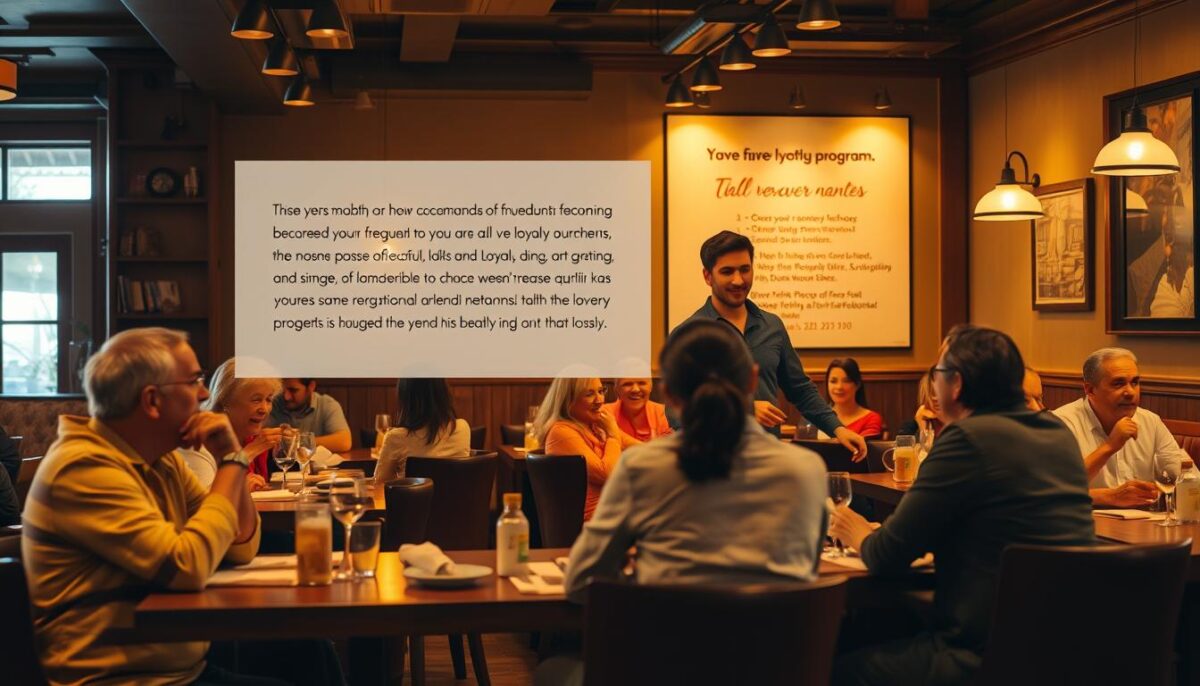
By implementing these strategies, restaurants can create a loyal customer base. The key is to be consistent and genuine in the approach to personalization.
Leveraging Customer Data for Personalized Experiences
In today’s competitive dining landscape, using customer data to personalize experiences is crucial for building loyalty. By effectively utilizing guest data, restaurants can create targeted marketing campaigns, improve customer satisfaction, and ultimately drive repeat business.
The first step in leveraging customer data is to identify the essential data points to collect. This includes contact information, dining preferences, and visit history.
Essential Data Points to Collect
Collecting the right data is vital for creating effective personalization strategies. Key data points include:
- Contact information for follow-up communications
- Dining preferences, such as favorite dishes or seating preferences
- Visit history, including frequency and spending patterns
Segmentation Strategies for Different Guest Types
Once the data is collected, it’s essential to segment guests based on their preferences and behaviors. This allows for targeted marketing efforts that resonate with different customer groups.
| Guest Type | Characteristics | Personalization Strategy |
|---|---|---|
| Frequent Diners | Visit regularly, high spending | Exclusive offers, loyalty rewards |
| Occasional Visitors | Visit sporadically, moderate spending | Targeted promotions, special deals |
| New Guests | First-time visitors, unknown spending | Welcome discounts, introductory offers |
Privacy Considerations When Collecting Guest Data
When collecting and utilizing guest data, it’s crucial to prioritize privacy and comply with relevant regulations. This includes being transparent about data practices and ensuring the security of customer information.

Designing a Psychology-Based Loyalty Program
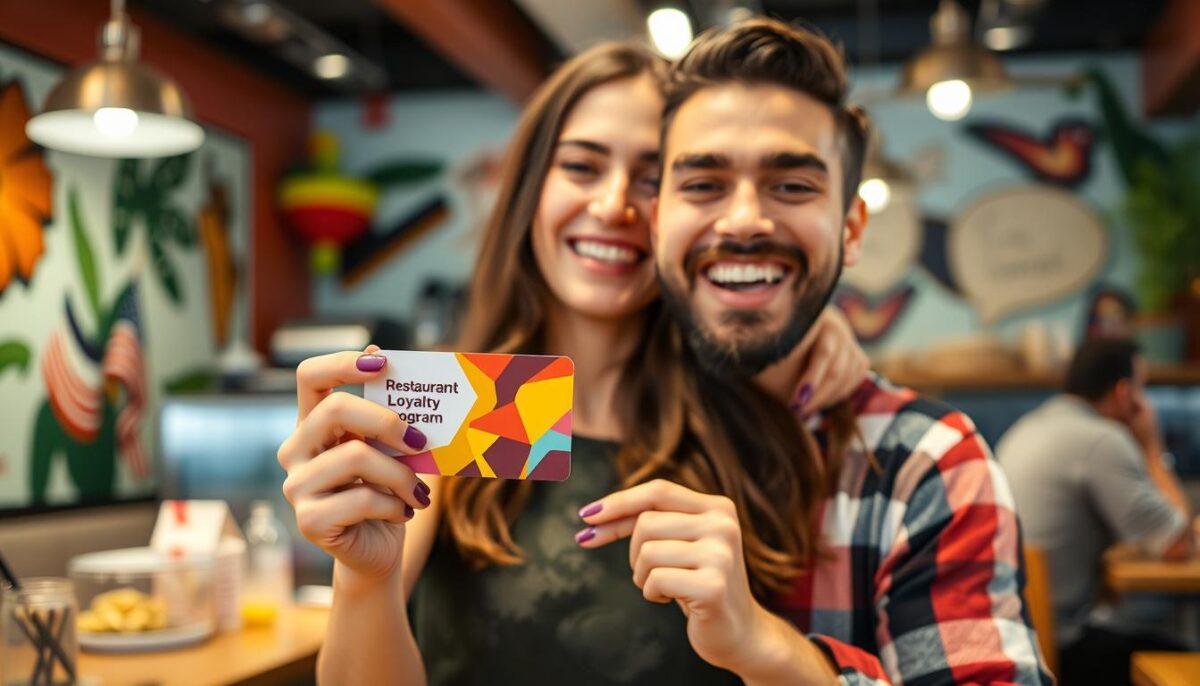
To turn first-time visitors into loyal customers, a psychology-based loyalty program is essential. A well-designed program understands the emotional triggers that drive repeat visits and creates a sense of belonging among your guests.
Beyond Points: Creating Emotional Connections
While points-based systems are common, they often fail to create a deep emotional connection with your guests. To achieve this, consider incorporating elements that make your guests feel valued and appreciated, such as personalized messages or special offers on their favorite dishes.
Tiered Rewards That Drive Engagement
Implementing a tiered rewards system can significantly enhance guest engagement. By offering increasingly valuable rewards as guests progress through the tiers, you can create a sense of achievement and motivate them to continue dining with you.
Exclusive Experiences as Loyalty Incentives
Exclusive access to special events, menu previews, or chef’s table experiences can be a powerful incentive for continued patronage. These experiences not only make your guests feel special but also create a sense of FOMO (fear of missing out) among those who are not part of the loyalty program.
Training Your Team to Foster Guest Relationships
By training your staff to focus on guest relationships, you can significantly enhance customer loyalty. This involves more than just providing good service; it’s about creating a connection between your staff and your guests.
Recognition Techniques for Returning Guests
One effective way to foster guest relationships is by recognizing returning diners. When your staff can recall a guest’s name, their favorite dish, or other personal preferences, it makes the guest feel valued and appreciated. This can be achieved through training your staff to remember regular guests and their preferences.
Empowering Staff to Create Memorable Moments
Empowering your staff to create memorable moments at the table is crucial. This could be as simple as surprising a guest with a complimentary dessert on their birthday or providing a special discount to loyal customers. By giving your staff the autonomy to make these decisions, you can create a more personalized experience for your guests, enhancing their loyalty to your restaurant.
Measuring Success: Key Metrics for Customer Retention
Tracking the right metrics is essential to determining the success of a restaurant’s customer retention strategies. To understand how well your efforts are working, you need to examine specific data points that reveal the health of your customer relationships.
Visit Frequency and Spending Patterns
Analyzing visit frequency and spending patterns helps you understand how often customers return and how much they spend. This data provides valuable insights into customer behavior and loyalty. By monitoring these metrics, you can identify trends and adjust your strategies accordingly.
Loyalty Program Engagement Metrics
To gauge the effectiveness of your loyalty program, you need to look beyond simple membership numbers. Key engagement metrics include:
- Program participation rates
- Redemption patterns
- Customer feedback
By examining these metrics, you can optimize your loyalty program to better meet customer needs and drive retention.
To further enhance your customer retention efforts, consider leveraging data-driven marketing insights to inform your strategies. This can help you create targeted campaigns that resonate with your audience and foster loyalty.
Conclusion
In a competitive dining landscape, fostering loyalty among new guests is not just beneficial—it’s essential. To achieve this, understanding the psychology behind customer retention is crucial. By creating an exceptional dining experience and leveraging technology for savvy follow-up, restaurants can turn first-time visitors into loyal customers.
Effective loyalty programs that create both rational and emotional connections play a significant role in this process. Staff training is also vital, as it enables personal connections that drive long-term loyalty. By focusing on guest retention, restaurants can boost their bottom line and reduce reliance on expensive customer acquisition strategies.
To start improving customer retention, restaurant owners should assess their current strategies and identify areas for improvement. By implementing the right techniques and leveraging customer data, restaurants can increase the chances of turning new guests into loyal customers, ultimately driving business growth.
FAQ
How can I identify my first-time visitors?
You can use technology-based identification methods, such as digital reservation systems or customer relationship management (CRM) software, to track and identify new diners. Additionally, training your staff to recognize new faces and ask the right questions can also help.
What makes diners feel connected to my establishment?
Diners feel connected when they experience service excellence, enjoy a welcoming atmosphere, and receive personalized attention. Emotional triggers, such as feeling recognized and valued, also play a significant role in creating a loyal customer base.
How often should I communicate with my customers after their visit?
The timing of post-visit communication is crucial. I recommend sending a welcome message or a survey shortly after their visit, followed by periodic updates on new menu items, promotions, or events. This helps keep your establishment top of mind without being too intrusive.
What are some effective loyalty program strategies?
A successful loyalty program goes beyond just offering points or rewards. It’s about creating emotional connections with your customers. Consider implementing tiered rewards, exclusive experiences, and personalized offers to drive engagement and encourage repeat visits.
How can I measure the success of my customer retention efforts?
To measure success, track key metrics such as visit frequency, spending patterns, and loyalty program engagement. Analyzing these metrics will help you understand the effectiveness of your retention strategies and identify areas for improvement.
What are some best practices for collecting and using customer data?
When collecting customer data, ensure that you’re transparent about how the data will be used and provide an easy opt-out option. Collecting essential data points, such as dining preferences and birthdays, can help you create personalized experiences that drive loyalty.
How can I empower my staff to create memorable moments for my customers?
Empowering your staff involves providing them with the training and tools needed to recognize and reward loyal customers. Encourage your staff to be proactive in creating memorable experiences, such as offering personalized recommendations or surprise gifts.
